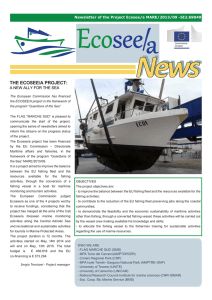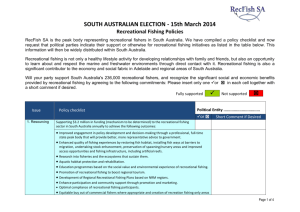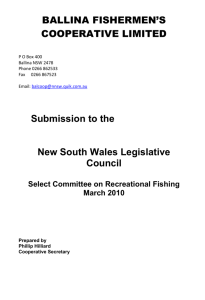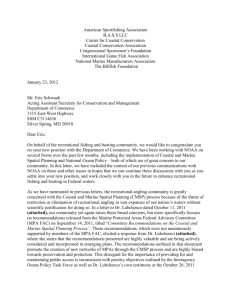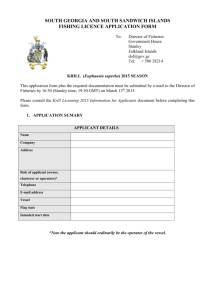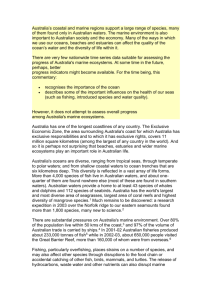Submissions for the Proposed Australian Biofouling Management
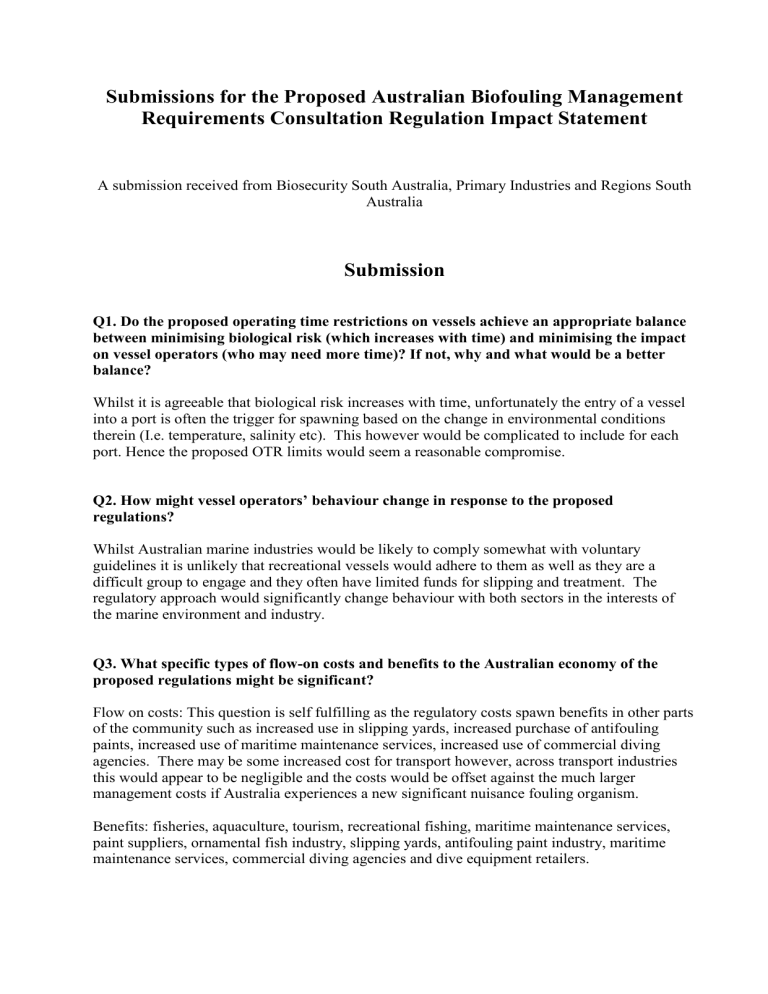
Submissions for the Proposed Australian Biofouling Management
Requirements Consultation Regulation Impact Statement
A submission received from Biosecurity South Australia, Primary Industries and Regions South
Australia
Submission
Q1. Do the proposed operating time restrictions on vessels achieve an appropriate balance between minimising biological risk (which increases with time) and minimising the impact on vessel operators (who may need more time)? If not, why and what would be a better balance?
Whilst it is agreeable that biological risk increases with time, unfortunately the entry of a vessel into a port is often the trigger for spawning based on the change in environmental conditions therein (I.e. temperature, salinity etc). This however would be complicated to include for each port. Hence the proposed OTR limits would seem a reasonable compromise.
Q2. How might vessel operators’ behaviour change in response to the proposed regulations?
Whilst Australian marine industries would be likely to comply somewhat with voluntary guidelines it is unlikely that recreational vessels would adhere to them as well as they are a difficult group to engage and they often have limited funds for slipping and treatment. The regulatory approach would significantly change behaviour with both sectors in the interests of the marine environment and industry.
Q3. What specific types of flow-on costs and benefits to the Australian economy of the proposed regulations might be significant?
Flow on costs: This question is self fulfilling as the regulatory costs spawn benefits in other parts of the community such as increased use in slipping yards, increased purchase of antifouling paints, increased use of maritime maintenance services, increased use of commercial diving agencies. There may be some increased cost for transport however, across transport industries this would appear to be negligible and the costs would be offset against the much larger management costs if Australia experiences a new significant nuisance fouling organism.
Benefits: fisheries, aquaculture, tourism, recreational fishing, maritime maintenance services, paint suppliers, ornamental fish industry, slipping yards, antifouling paint industry, maritime maintenance services, commercial diving agencies and dive equipment retailers.
Q4. The estimates of costs are based on average vessel numbers from 2002-2009. Is there any activity or trends that suggest any significant change in vessel movement or increased numbers of arrivals?
Vessel movements would be expected to increase significantly based on the 40% increase in port infrastructure by 2020 to meet Australia’s demand.
Q5. Are the cost assumptions consistent with industry experience? (see appendix D for all cost assumptions). Are there better estimates of costs available?
The cost estimates could be expected to be higher based on the comments made in one of the consultation meetings to launch the draft RIS.
Q6. Are the other assumptions used to estimate costs and benefits reasonable based on industry experience? If not, how could they be improved?
They appear to be reasonable. The particular industries would be better placed to answer this question. However, it is not clear whether a suitable benefit is assigned to the rest of Australia’s recreational fishing individuals and the flow on to the sellers of fishing gear. If there are less fish, people generally go fishing less and buy less gear (bait, tackle, boating equipment etc).
There should be some assumption and estimate in the document to encompass this for outside of the Great Barrier reef example. I.e. the benefits would appear to be higher.
Q7. The methodology for estimating the economic value at risk relies on a series of assumptions about the value of commercial fishing and the Great Barrier Reef. Are there more plausible assumptions or approaches that could be used?
Commercial and recreational fishing values should be incorporated.
Q8. What other evidence is there of the potential impacts of non indigenous marine species becoming established in Australia?
Wild Pacific oysters have decimated many parts of the coastline of Tasmania and tributaries of
NSW.
Q9. What is industry’s view of the likely effectiveness of a voluntary approach to reducing the risks associated with biofouling compared to a regulatory approach?
N/A
Q10. Do you have any other comments on the Regulation Impact Statement?
The regulatory approach is the preferred approach based on the cost / benefit analysis provided in this RIS and the unquantified potential benefits which are difficult to include (i.e. recreational fishing and flow on enterprises).
An aspect that requires change is that the list of species does not include the high risk ballast water/ National Control Plan species, those being resident in some jurisdictions and not others.
This should be avoided as an international vessel entering Australian waters with these nonindigenous species as biofouling to a port which currently is free of these pests will not be managed. It is not clear why they have been left out.
There also is no indication of how species are to be added or left off this list and how it will correspond to the government’s Consultative Committee for Introduced Marine Pest
Emergencies (CCIMPE) trigger list.
Also the assumption based on the New Zealand Green Mussel Perna calaniculis is incorrect. The incursion in Port Adelaide South Australia in 1996 led to significantly expensive management such as removal by divers and dredging. The species could impact on the lucrative blue mussel industry in SA and is due to be re-considered for inclusion on the CCIMPE trigger list.
The RIS as presented appears to be well researched report illustrating a good model and case for the regulatory approach.
Disclaimer: please note that the comments above do not necessarily represent those of the
Marine Pest Sectoral Committee (MPSC).
